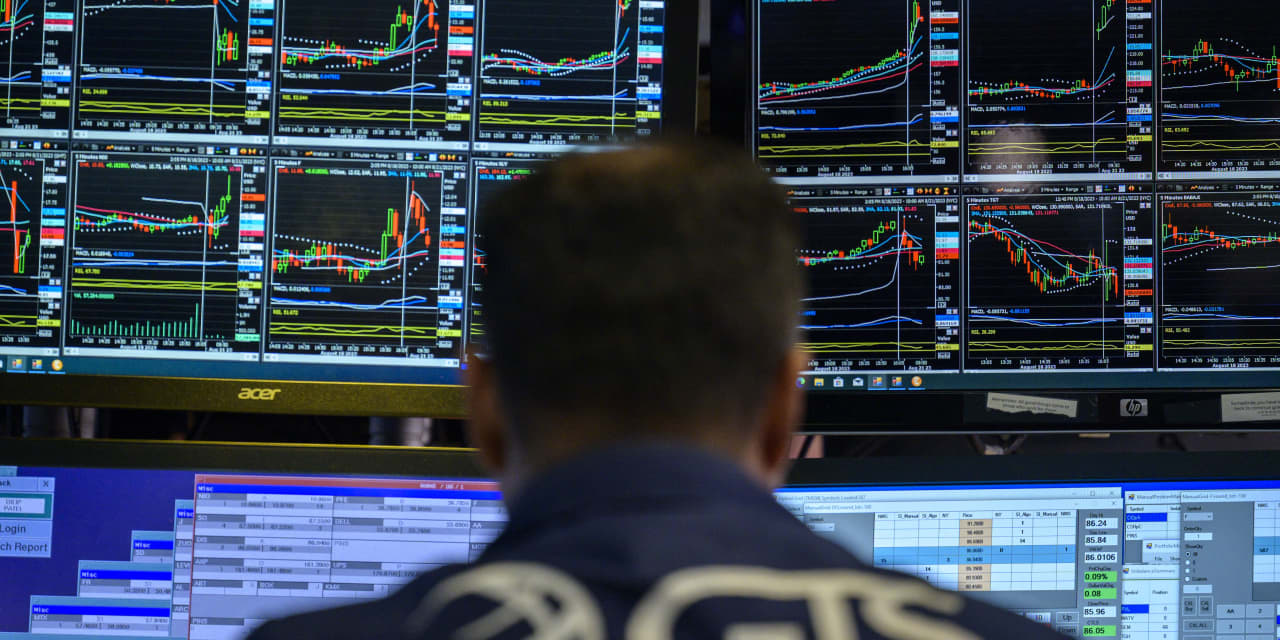I’m ruling out dressing for Halloween as a 10-year Treasury paying 5%. It’s too scary, judging by Wall Street chatter over a recent climb in yields. Plus, I’d have to explain to neighborhood CFAs that the paper certificate is just a metaphor, and that yes, I know that Treasury issuance has been almost entirely electronic for years. But mostly the too-scary part.
The 10-year yield just hit 4.7%, up from 3.8% in mid-July and less than 1% for much of 2020. It’s the highest yield since 2007. Both the Federal Reserve and China are selling Treasuries. And buyers are said to be suddenly worried about the U.S. debt, so they must be coaxed with ever-higher yields.
That could hamper stocks, say strategists at Goldman Sachs, Morgan Stanley, and J.P. Morgan. Savita Subramanian, the top stock strategist at BofA Securities, remains bullish. ”Companies have time to sort of adapt to this new higher-rate, higher-inflation environment,” she says. More on that conversation in a moment.
Three quick points of emotional support for rattled investors: First, yields are higher, but not particularly high. Since 1962, the average daily 10-year Treasury yield was more than a point higher than now—5.9%, according to data from FRED, the Federal Reserve’s economic data service. Since 1971, the average 30-year mortgage rate is 7.7%, versus a recent 7.3%.
Both averages are pulled higher by the anti-inflation crusade of the early 1980s, when mortgage rates topped 15%. But they’re also pulled lower by a much longer period from the global financial crisis through early last year, when the Treasury at one point had to update its software to allow for negative-yield bidding on T-bill auctions. Monetary historians say long rates are bouncing back from a 5,000-year low. So who’s to say what exactly is normal? But clearly, yields today are moving toward normal, not away from it.
Second, that’s good. Savers need respectable yields on bonds to properly diversify their assets. Otherwise they might buy nutty things, like cartoon ape faces, and then convince themselves that the cartoons are valuable, because they’re NFTs, or nonfungible tokens—engineered digital scarcity powered by the blockchain, which something-something the future of money or whatever. And before you know it, the New York Post will publish the headline, “NYC Man Sells Fart for $85, Cashing In On NFT Craze.” Which happened. Less than three years ago.
Third, higher yields don’t have to be painful for stock investors. From 1985 to 2005, inflation-adjusted bond yields were higher than now, on average, and stocks during that stretch returned 15% a year, according to BofA Securities. Subramanian, head of U.S. equity there, isn’t overly concerned about recent stock market selling. She points out that 5% market pullbacks have happened three times a year on average in data going back to the 1920s.
“The idea of a little bit of steam being taken out of this Magnificent Seven makes sense to me,” she says of recent declines in tech giants like
Apple
(ticker: AAPL),
Amazon.
com (AMZN), and
Nvidia
(NVDA).
Just as most U.S. mortgage holders have locked in low fixed rates, U.S. companies have bought time to respond to rising rates.
“Floating rate risk has been cut in at least half since 2007, and close to 80% of debt sitting on corporate balance sheets for the S&P 500 is fixed rate,” says Subramanian. She points out that unlike fixed income, companies can respond to changing conditions. For example, they’re using artificial intelligence and automation to become more efficient, which could help contain both their costs and broader labor inflation.
Barring a recession, mass layoffs, or a super spike in the oil price, the second quarter of this year is likely to mark the low point for S&P 500 earnings growth, with earnings gains picking up over the next one to two years, says Subramanian.
“I think the next story for margins might not be cost cutting, or globalization or cheap capital,” she says. “But it might be more about efficiency gains and stickier operational improvements.”
BofA’s latest year-end
S&P 500
forecast is 4600, implying 9% upside from recent levels. We’ll see.
The clearest call to action, it would seem, is for those investors who fled bonds for money markets, or worse, to return to a proper bond allocation. A 10-year inflation-adjusted Treasury recently yielded 2.3%—no reason to ditch stocks, but probably better than an ape face.
Corrections & Amplifications
The 10-year Treasury yield was less than 1% for much of 2020. An earlier version of this article incorrectly gave the year as 2000.
Write to Jack Hough at [email protected]
Read the full article here













